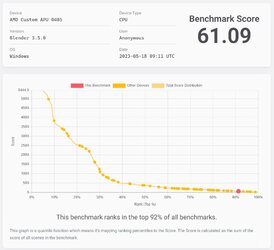- Joined
- Mar 7, 2008
Without looking for the exact numbers Intel is still the main volume supplier longer term. AMD have targeted certain markets and are certainly making gains in certain areas like server, at the cost of other areas like GPUs where it doesn't feel like they're trying for volume growth at all. There can be some supply chain continuity hitches here and there which may mean short term unavailability, especially when transitioning between generations.The fact that AMD had no problems with their CPU production in the last years while Intel was waiting in the queue, only proves that Intel means as much as AMD nowadays. Who pays first is more important in the current moment. Because of that, Intel had problems to deliver a huge amount of CPUs to servers and laptops, so AMD took over a quite large % of orders. There were 2-3 months when 90% of branded laptops available in distribution were only on AMD.
It is known that Intel 10nm in general is a big fail on their side, and they're still recovering with the intent of passing TSMC in process leadership in next few years or so. If they can pull that off given ongoing delays with near-future products remains to be seen. It has also impacted on their ability to make designs they have.Another thing is that Intel 10nm process was a fail, they were trying it for a year and finally released next 2 gens based on 14nm. Now we have old technology maxed out only to beat AMD while AMD jumped to another smaller process.
The latest "10nm" incarnation in Raptor Lake uses a further enhanced version of that from Alder Lake. If you compare Raptor Lake vs Zen 4, the efficiency gap between them isn't big at all. I posted a performance/power chart somewhere maybe earlier in this thread or other similar. Raptor is behind, but not by that much. The higher peak power reported without sufficient context for clickbait articles only applies to specific workloads.
Just wish AMD would have released the 3D version sooner as it might have tempted me, since modern higher end CPUs are severely ram limited in performance.Intel is slightly faster in games now at the cost of much higher wattage. It will probably change when AMD release 3D cache version of Ryzen 7000 in a month, while Intel has nothing better to show.
Due to changes in my personal circumstances I no longer buy (almost) every gen to play with. The last generations I got were Rocket Lake, and Zen 2. On Intel side there were no major problems. Zen 2 I recall we still had the memory support problems for first few months until that stabilised, and was really great after it matured. Maybe DDR5 mixed things up a bit again but it doesn't feel like the right time for me to bite just yet. Looks like still some problems on both sides there, more so on Zen 4 as it is newer.The main problem which I see with Intel is that at least since 2nd Ryzen gen, every new Intel generation has design flaws or isn't tested right before release. They try hard to keep up with AMD processors. It looks like there is a premiere, 3-6 months of BIOS updates, manufacturers start to work on another generation while everything that wasn't fixed is a users' problem. After next 4-6 months we get a new chipset which gives us barely anything new and the story repeats, making from users' beta testers.
Since I downsized in systems I'm back to using Skylake-X as my daily driver. My Rocket Lake system which was used solely for gaming I might sell while it might still be worth anything. If I had to buy a desktop system right now I think I'd lean slightly towards Zen 4, but it is AVX-512 tipping me over from Raptor Lake. 3D version could seal the deal if it isn't too late and we get into "there's a new gen in a few months" situation.
